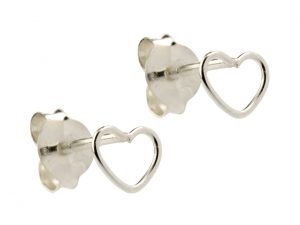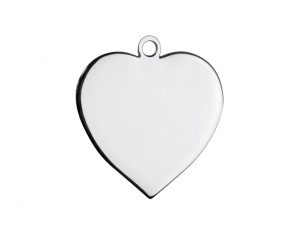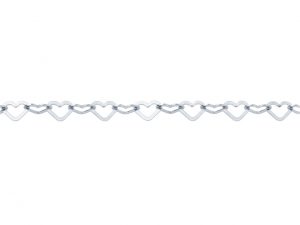Love it or loathe it, Valentine’s Day is looming once again and the shops are festooned with images of hearts in every configuration you can possibly imagine. This got me thinking about the heart itself as an image and a design icon, and how it has evolved over time to remain current. So, with that in mind I have done a little digging to find out more about it…
The first known depiction of the human heart as a symbol of love is thought to have come from an image dating from the 13thCentury (c. 1250). It is significant because it was the first time the image was used as a metaphor which is how we know it today. The heart in the image was thought to be pinecone shaped, in accordance to anatomical knowledge of the human heart at that time. However, as with much popular iconography, its true origins are very much open to conjecture and many other theories surrounding the image of the heart exist.
Another widely accepted theory is that it is based on the shape of ivy leaves, which were a symbol of fidelity in many cultures, as well as being an image to protect against evil. There is also a school of thought surrounding the shape of the Silthium Seed Pod, which was a type of fennel that doesn’t exist anymore. It was the main ingredient used for birth control at the time, and its shape was identical to the heart image that we recognise today.
In terms of design, a heart can take many forms and body art explores many of these different styles and metaphors. Tattoos represent one of the most direct methods of non-verbal communication and self-expression, and hearts are central to a diverse range of designs. Traditionally, hearts have been depicted with wings and can have a number of different meanings: ascension to a higher level, the passing of a loved one to another place, or simply love itself and so the list goes on.
Flaming hearts (or The Sacred Heart to give it its proper name) are a strong Christian image, and are often depicted with ‘divine light’ emanating from behind, along with a crown of thorns and a cross at the top, utilising powerful religious iconography. These types of designs are often vey stylised, using traditional black outlines and strong primary colours to make a bold and strong statement. However, more modern trends have moved towards softer edges which fade out gently. This changes the design once again, creating a much more subtle effect overall which is more palatable to a wider audience.
As far as jewellery is concerned, the heart never really goes out of fashion, and it is universally popular in every conceivable design. If you type ‘heart jewellery’ as a search term into Google it brings up 196,000,000 results, which is a strong indication of its enduring popularity!
Sterling Silver Heart Outline Stud Earrings (XSS 2099)
At the moment heart designs appear, on the whole, to be pared back and simple, set in an upright position with a clean and classic symmetrical outline similar to the example above. Puffed hearts are not so much in evidence, and we are also seeing less of the Tiffany-style outline. Decoration is being kept to a minimum and is more uniform than organic, so again symmetry and order are key. The message is clear when you are giving or receiving a heart based piece of jewellery, so there is really no need for complicated details.
Right now simple is best when it comes to the pure and straight forward sentiment of love, so with that in mind, here are a few pieces from the Cooksongold range to give you some Valentine’s Day inspiration:
Sterling Silver Heart Stamping Blank (NVJ 602X)
Sterling Silver Heart Link Chain (WVE 201)
There’s no doubt about the popularity of the heart when it comes to giving jewellery to a loved one. No matter who the recipient, you are bound to find something special in our range of heart themed finished jewellery – or if you are looking to create your own design, why not take a look at our selection of heart beads or love themed design stamps?

Cooksongold




